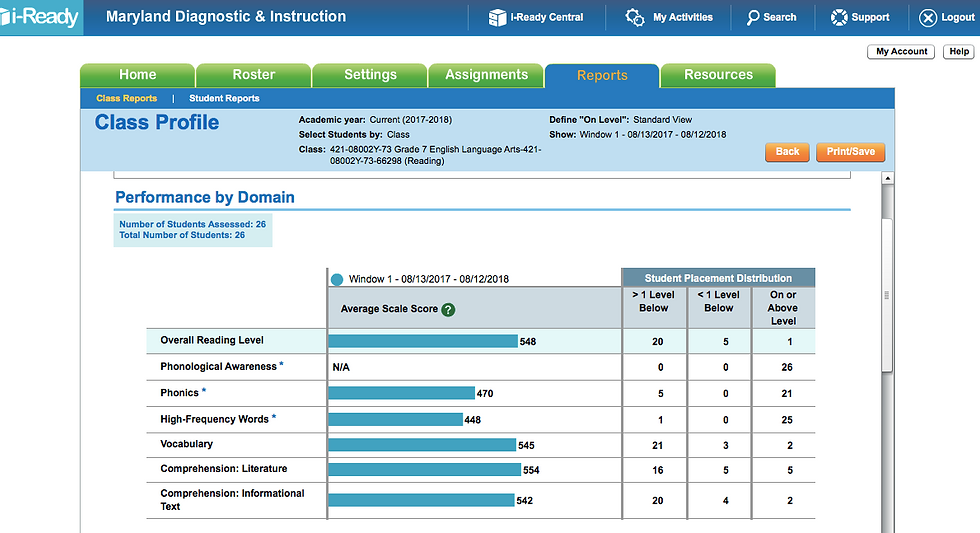CORTNIE BELSER'S MSED PORTFOLIO
ASSESSMENT
InTASC Standard 6: The teacher understands and uses multiple methods of assessments to engage learners in their own growth, to monitor learner progress, and to guide the teacher's and learner's decision making.
Introduction
Assessments provide teachers with the ability to evaluate their own progress as the primary instructor of the classroom. In order for student achievement to not be measured from a stand alone summative assessment or high-stakes test performance, teachers incorporate opportunities to evaluate growth towards specific academic goals throughout the year. There are a variety of diagnostic and formative assessments tools that effective teachers use to measure student growth and engage students in the assessment process. Moreover, engaging students in assessments offers teachers the ability to monitor learner progress not only through their lens, but also provides students with the opportunity to make sense of their progress and offer context on the learning experience. Without learner involvement, assessments operate as background music to the production that is occurring in the classroom. As students and teachers become more aware of how assessments reflect the effective instruction and engagement in a classroom, students strengthen their metacognition, critical thinking, and self-assessment skills, which are all anchors of college and career readiness.
In my classroom, assessments are forms of communication between me, my students, and the content skills taught. Forms of assessments occur on a fluid yet consistent basis. Since Maryland has adopted the Common Core State Standards (CCSS), I utilize standard-based diagnostic, formative, and summative assessments to evaluate student performance throughout the course. Through the use of assessments, I focus on how to best introduce and familiarize foundational content skills through instruction and assessments that will be critical not only for students' high-stakes testing performance, but also high school, college, and career readiness. Since the majority of my students are reading and writing at least 2 years below grade level, assessments allow me to address gaps in knowledge and differentiate instruction to tailor to student needs. By embedding multiple methods of assessments, such as informal formatives or culminating writing performance tasks, I am able to understand how students make sense of content knowledge and apply skills to explore new concepts and move towards standards mastery.
Since all assessments highlighted are administered to seventh and eighth grade students, the evidence reflects both grade-level student data and engagement.
Below, you can click each image to explore how I integrate multiple methods to engage, monitor, and guide decisions making on assessments:
Conclusion
Ultimately, the role of the teacher in relation to assessments is to provide rigorous standards-based content and skills practice that can track student performance growth throughout the year. In addition to designing and administering assessments, I work in partnership with students to evaluate how assessments reflect their college and career readiness. While assessment data analysis allows me to better understand whole-class performance, it also centralizes the importance of ensuring every individual student has an attainable progress goal. Assessments allow me to evaluate my own teacher growth and respond to gaps in content knowledge or skills during instruction. Although assessments are not the only evaluative process to measure students' critical thinking and college and career readiness skills, each diagnostic, formative, and summative assessment offers an additional layer into how I facilitate the relationship between instruction and application of skills. As a reflection of my teaching philosophy, assessments allow me and my students to communicate as a community towards a collective vision of achievement. When students operate as organizers in the classroom, engaging in assessments draws upon their autonomy and leadership to offer opportunities for me to evaluate my growth as a teacher through my students' lens.



